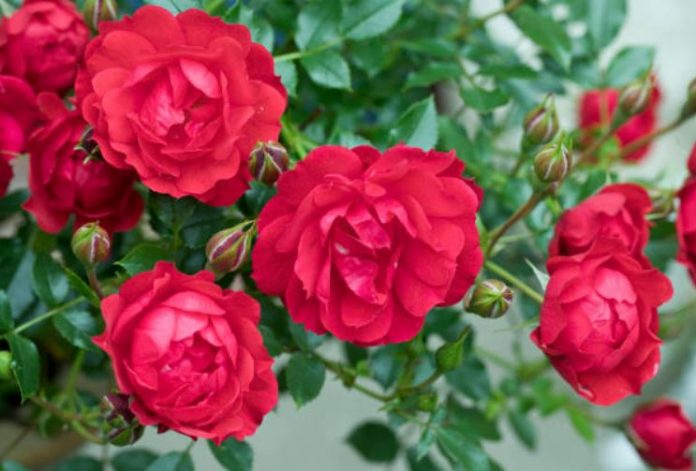Miniature roses are definitely real roses; they’ve just been cultivated to stay much smaller than their full-size counterparts.
Their miniature size also extends to their blooms, which are also much smaller than their standard rose brethren.
Pretty much like full-size roses, they come in a full range of colors so they’ll fit ideally into a wide range of garden designs.
One very particular advantage of miniature roses is that they tend to be much harder than other types of the rosebush and can stand quite harsh winter conditions.
Another advantage is that they are usually repeated bloomers and have a long flowering season.
Miniature roses come in several different sub-types, some of the most popular being:
1) Miniature climbing roses, which can be trained to grow up supports such as a trellis.
2) Miniflora. This is a classification of the American Rose Society. They developed it to classify a relatively new type of miniature rose that has slightly larger blooms than normal.
The overall size of the bush is also a bit larger than a normal miniature rose.
3) Trailing miniature roses, which, as their name suggests, have growth, which hangs downwards, and is, therefore, ideal for hanging baskets and window boxes.
As far as planting and care go, miniature roses are really no different than their full-size relations. Once planted you should water really well and apply a layer of mulch.
As mentioned earlier, the hardy nature of miniature roses makes them year-round plants in a lot of climates.
Because of this, it is vitally important that you keep them well-nourished, and to this end, you should expect to fertilize them regularly.
As far as watering goes, you should, generally speaking, do this once a week, but you’ll have to adjust for local conditions.
The more rainfall you get, the less additional watering you’ll need to do. You just need to ensure that the water soaks down to the full length of the root. This means you should be aiming for twelve to eighteen inches below the surface.
You should prune your miniature roses the same as full-size roses.
In terms of diseases and pests, miniature roses are prone to the same ones as their larger namesakes.
Whilst it is possible to grow miniature roses as houseplants, most gardeners agree that they tend to do better when grown outside. One of the reasons for this is that they need a humid environment in which to thrive.
When the heating is turned on in the winter indoor humidity can be hard to maintain and indoor-grown miniature roses can dry out in this season.
Growing miniature roses is certainly a fascinating and rewarding hobby and will ensure that your garden has the maximum color for the longest growing season.

